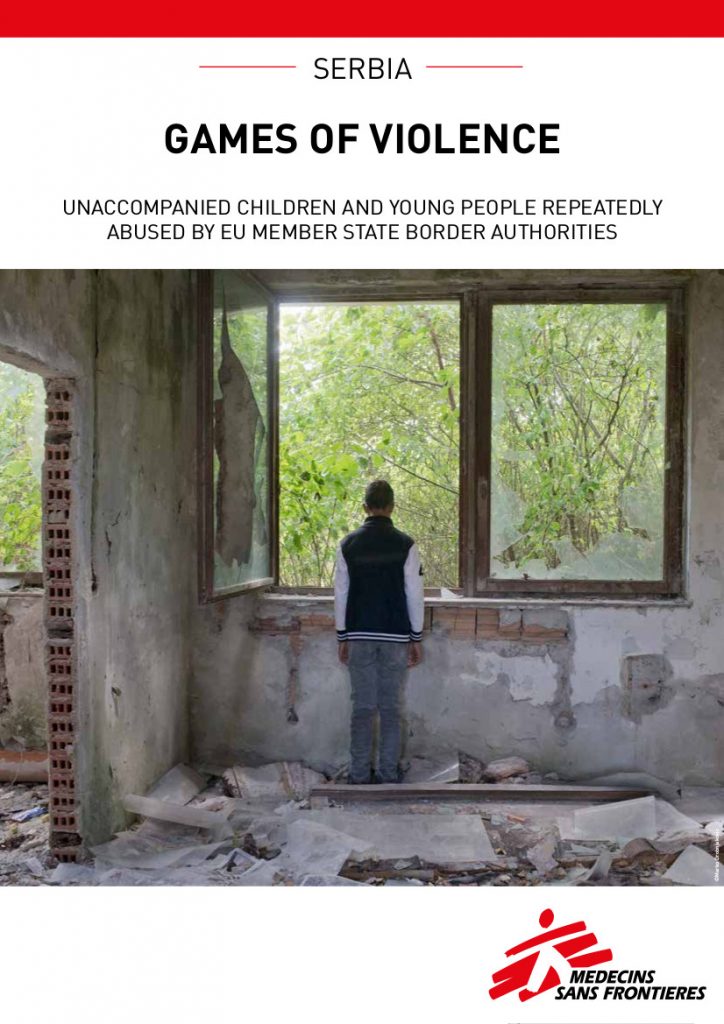The Secretary General’s Special Representative on Migration and Refugees carried out a fact-finding mission to Serbia and two transit zones in Hungary from 12 to 16 June 2017. In Serbia he visited asylum and reception centres in Adaševci, Principovac, Krnjača, Subotica, Sombor, Bogovađa and Obrenovac and met with representatives of the government, the authorities responsible for asylum and migration-related matters, intergovernmental organisations, the European Union as well as civil society. In Hungary he visited the transit zones of Röszke and Tompa and met with the regional representatives of the asylum authority, as well as with the UNHCR and one NGO.
Serbia has experienced a massive influx of migrants and refugees travelling along the so-called Western Balkans migration route during 2015 and at the beginning of 2016. After the closure of this route in 2016, more than 7 000 refugees and migrants, among whom around 1 000 unaccompanied children, remained in Serbia. The arrival of such a high number of migrants and refugees has presented significant challenges for the Serbian authorities. It is to the credit of their enormous efforts that migrants and refugees have been provided with accommodation, food and other forms of support. Serbia’s approach to respect the right to liberty and freedom of movement of migrants and refugees should also be commended.
However, access to the asylum procedure remains problematic. At times migrants and refugees are pushed back from Serbia to its neighbouring countries without being given a real opportunity to claim asylum. In many cases migrants and refugees lack basic information about the possibility of obtaining international protection in Serbia and encounter difficulties in contacting the asylum authorities. Most of those who are currently in Serbia have been certified by the competent authorities as having expressed an intention to seek asylum but have not lodged asylum applications as their end-goal is to reach other European countries. Consequently, the large majority of migrants and refugees are stranded in Serbia for several months without an official legal status, waiting for an opportunity to cross the borders with Hungary or Croatia. The flow of migration from Serbia to Hungary is managed through a waiting list which is compiled in an informal and non-transparent way, raising suspicion that corruption could be involved.
As migrants and refugees’ prospects of reaching their destination countries are uncertain they might, over the course of their stay in Serbia, decide to seek international protection in Serbia. Therefore, it is important that they are provided with information on asylum in a systematic way and that they have real opportunities to access the asylum procedure. A strategic approach is also needed to address the precarious legal status of those who cannot be expelled from Serbia although they have not lodged asylum applications and to identify sustainable solutions regarding their social and economic rights.
Due to the high number of migrants and refugees all asylum and reception centres in Serbia operate beyond capacity. This has had an impact on the reception conditions, in particular the standards of accommodation and services provided, which potentially raise issues under Article 3 of the ECHR. The age of unaccompanied children is often determined haphazardly, leading in certain cases to the accommodation of boys under 18 years together with adult men. This raises serious concerns regarding children’s exposure to risks of violence and sexual abuse and sexual exploitation. The presence of a high number of unaccompanied children in some reception centres poses challenges to the provision of guardianship, which in turn results in lack of support for unaccompanied children in processes affecting them. Educational provision for children in asylum and reception centres is rather scarce.
The determination of migrants and refugees to reach other European countries will continue to create demand for smugglers in Serbia. Eventually smuggling could become a complex criminal activity for which Serbian authorities need to be prepared with know-how on how to prevent and fight it, while engaging in effective co-operation with law enforcement authorities in other countries. The Council of Europe can facilitate meetings with technical experts and law enforcement authorities from other countries, including source, transit and destination countries, in order to exchange experiences, develop strategies and set common priorities to prevent and fight smuggling.
Overall, Serbia should develop a strategy which looks beyond the emergency phase and goes further than the provision of humanitarian assistance to migrants and refugees. The ongoing legislative reform of the law on asylum and foreigners provides opportunities for developing such a strategy as well as for co-operation between the Serbian authorities and the Council of Europe to address the issues identified with due regard for the human rights standards of the Organisation.

